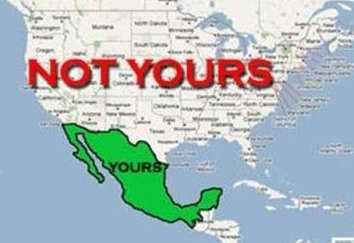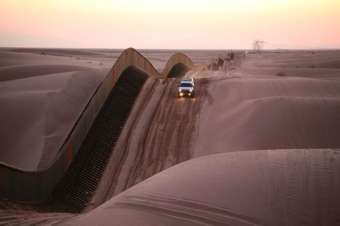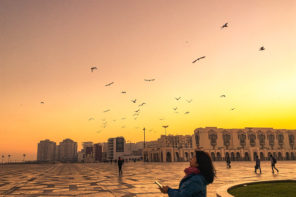The creation and maintenance of a national border is an act of political geography. The building of a wall or fence on that same border is an act of moral geography.
A wall does far more than strengthen or underscore the distinction between one political entity and another. While a border may or may not be a relatively static political and legal fact, the erection of a wall or fence is an action that responds to other actions – in this case to an actual, or feared, uncontrollable deluge of border crossers and drugs: criminality in the form of people and commodities. The wall is meant to stop them, but also to communicate both a readiness to act and fear on the part of the builders. It is inevitably interpreted as a moral statement: that the builders have something important, worth protecting, and threatened by others from outside: not just resources, but a way of life based on shared values. It is border not just between the United States and Mexico, but between Order and Chaos, Good and Evil.
The fantasy of shared values of course breaks down within the walls wherever internal boundaries and barriers subtle or physical are erected, such as in gated communities. And the fantasy that the threat is from without can only be maintained by ignoring the fact that the flow of such illegal people and commodities is a function not just of the desire of the desperate and ambitious south of the border, but of business and consumers “protected” by the wall. A variety of businesses want, or even need to survive, cheap, unofficial labour. A large number of people want drugs, as well as lower prices for legitimate commodities produced by illegitimate labour.
If there is no diminution in the desire fueling this movement, the consequences of draconian enforcement are simply to raise the costs of crossing, thereby both increasing the violence of organized criminals involved in moving drugs, and attracting those same people into the increasingly lucrative people smuggling business.

Meanwhile, the moral geography of both the US and Mexican States are also challenged by their respective citizenry. South of the border, mass demonstrations drawing attention to the moral failure of the Mexican state occupy central spaces in the capital, while on the US side voluntary associations of citizens equally disenchanted with State performance, alternatively build their own walls and fences, or place water tanks in the desert for passing migrants. In all cases the landscape is inscribed by movement, the deployment of material culture, and a stream of discourse, all in the service of fleeting or more persistent place- and space-making: performing alternative moral geographies. (for further discussion of these and related issues see papers on academia.edu ).










